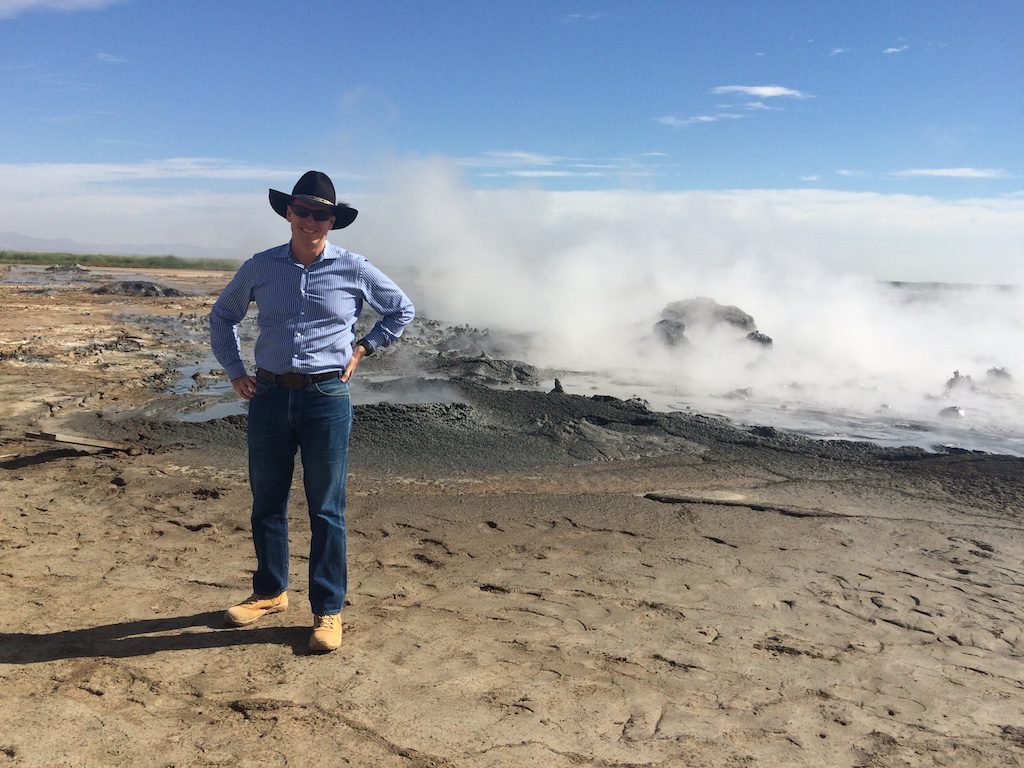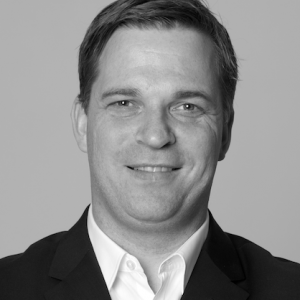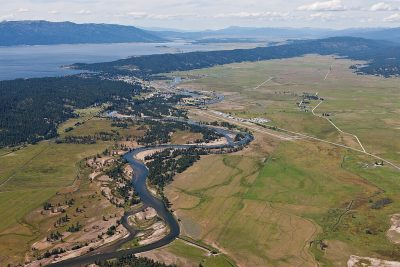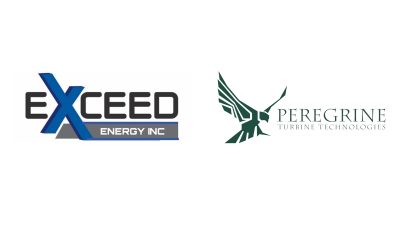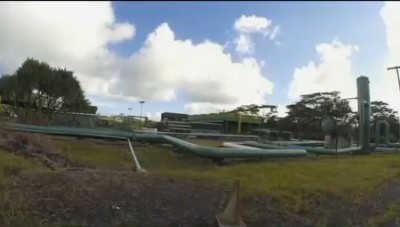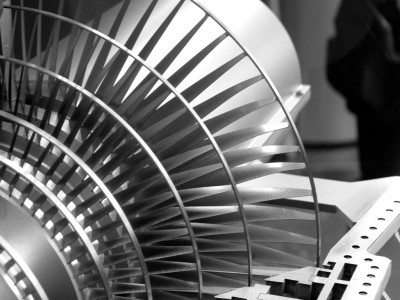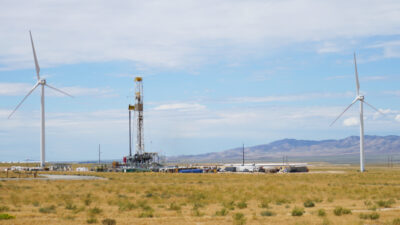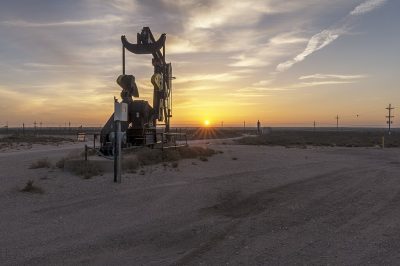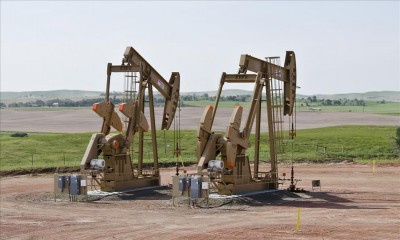Environmentally friendly direct lithium extraction from geothermal – Interview with Rod Colwell, CEO of Controlled Thermal Resources
Controlled Thermal Resources (CTR) is among the companies on the forefront of making extraction of Lithium from geothermal a reality, so in this interview with Rod Colwell, the company's CEO we learn more about the status and background of the project.
With the increasing news flow on lithium extraction in the context of geothermal development, we have been following the different companies and their technical approaches in the U.S. and elsewhere. Lithium is a crucial element for producing sufficient battery power for the planned electrification of the transportation sector.
Controlled Thermal Resources, a U.S. developer, started looking into geothermal development at the Salton Sea geothermal field in California several years ago. This is one of the “hot beds for geothermal development in the U.S. We have been quite keen to learn more on the company’s activities and approach to combine geothermal power generation and Lithium extraction. So were quite pleased to connect with Rod Colwell, CEO of the company to learn more.
Could you explain a little bit the background of the project in the context of where it is now?
CTR commenced planning for its Hell’s Kitchen project in 2014. We initially focussed on renewable energy supply as the priority with the added benefit of extracting critical minerals such as lithium. In 2020 we see multiple revenue streams from both minerals and power creating further resilience around the project. From the beginning, CTR positioned itself in the market as an accessible, sustainable and highly robust dual resource in a politically secure location. These four factors are now proving especially critical to battery manufacturers and the auto sector as they pivot away from centralized lithium and battery supply out of China. Forecast growth for battery-grade lithium and renewable energy in California continues to line-up with CTR’s expected Stage 1 delivery in 2023.
We see a lot of talk on lithium in the context of geothermal energy. Traditionally, lithium has been mined in a traditional way from hard-rock ore. How would deriving lithium from geothermal brine be competitive?
The methods to extract lithium via hard rock and evaporation pond mining are coming under greater environmental scrutiny. There are concerns around product quality, cost, processing methods, long development lead times, as well as significant negative environmental impacts.
In contrast, direct lithium extraction (DLE) from geothermal brines is a closed-loop system that returns spent brine to its original source; utilizes 100% renewable power and steam for processing; takes hours, not months to produce high purity lithium products; has a very small physical footprint, and a close-to-zero carbon footprint; is not weather dependent or water intensive; doesn’t require open pit mines, large evaporation ponds or off-shore processing and; will run 24 hours a day, 7 days a week.
The project’s Preliminary Economic Assessment, by HATCH concluded that Lilac Solutions’ DLE technology, selected by CTR, is expected to sit within the first quartile cost range – well below hard rock spodumene production and processing.
There are now efforts to mine lithium from geothermal brine in Germany, Kenya, New Zealand and Turkey. How does California and particularly your project in the Salton Sea compare to those efforts?
Yes, we’ve seen more activity in this sector over recent years as existing geothermal plants look to maximize returns on their power plants through extraction of lithium. It makes sense to investigate.
Past attempts to extract lithium from existing power plants have had their challenges. Lithium extraction systems were essentially ‘bolted-on’ downstream from the power plants and the systems were basically ‘force-fed’ spent brine which is not ideal.
Designing an integrated lithium facility from the ground-up using vastly improved direct lithium extraction technology allows us to deliver far more efficient and cost-effective outcomes. Scalability is also a major factor. Investors and partners want to see that upscale value.
But what really sets the Salton Sea apart from other projects is the productivity of the wells. Nowhere else in the world do wells with high lithium concentrations produce at equivalent flow rates.
It seems there are various technology companies approaching the extraction of lithium from geothermal brine. How did you choose your partner for the project?
CTR actioned a rigorous selection process in 2019, and in March this year we announced our technical partnership with Lilac Solutions. We will deploy a lithium extraction pilot facility utilizing Lilac’s proprietary ion exchange technology which recently received a $20 million funding, led by Bill Gates’ Breakthrough Energy Ventures.
Lilac Solutions has conducted numerous large-scale tests on brine samples from around the world and received independent verification on the performance of the technology. The Lilac technology is significantly cleaner, faster, cheaper, and more scalable than existing mining technology.
Lilac has taken a fundamentally different approach to extraction of lithium from Salton Sea geothermal brine using unique ion exchange beads developed by their team in Oakland. This technology contrasts prior work by others to adapt conventional aluminium-based absorbents which have not performed well in this application. Lilac’s technology offers exceptionally high lithium recovery and lithium selectivity, enabling low cost production and the team has proven these results with thousands of hours of test work on the Salton Sea geothermal brine chemistry.
How does the extraction of lithium paired with the operation of a geothermal plant work? Can you sufficiently produce electricity and how does the lithium extraction impact the revenues achieved from the geothermal operations or actually vice versa?
Geothermal brine is produced to the surface and directed to the plant through gathering lines. At the plant the brine is flashed to produce steam. A portion of the steam is directed to the steam turbine generator to produce electricity and a portion of the steam is directed to the lithium plant to support various processes.
Through the flash process brine is concentrated and cooled to a manageable temperature for lithium extraction. The cooled brine is processed by a series of steps to remove silica and other impurities prior to lithium extraction.
The pre-treated brine is sent to the direct lithium extraction process where lithium is selectively extracted producing a lithium chloride solution. The lithium chloride solution is further processed using conventional purification, concentration and conversion steps.
The direct use of geothermal steam negates the need to consume natural gas or other fossil fuels that require heat addition.
Integrating the geothermal process with lithium production allows the process to be completely sustainable.
The integration also allows two revenue generating facilities to share costs of common infrastructure such as the well field, flash plant, silica removal, warehouses, roads, buildings etc… The overall impact that both operations realize is a cost advantage.
The Salton Sea, the area of your project, is known as an area rich in geothermal resources, but also with challenges to the mineral content of the geothermal brine. How do the lithium resources compare to other regions of the world and why is California so interesting in this context?
The Salton Sea Geothermal field has several major advantages.
- The resource has well-known and established mineral concentrations.
- The SSGF has been studied for decades and thus established a relatively consistent distribution of lithium throughout the field. This minimizes the resources risk compared to other regions that are undeveloped.
- The long operating history of this geothermal field, since 1982, has established well productivity and boundaries of the productive part of the field. Again, minimizing resource risk compared to other regions in the world.
- The field is located near critical infrastructure such as highways, railway, water delivery systems and transmission, not to mention proximity to a local skilled workforce.
- A problematic impurity in other resources is magnesium. The SSGF has very low concentrations of magnesium making extraction more economic.
It’s arguably the most researched geothermal resource in the world today and one of the largest mineral resources in North America.
Geothermal energy provides a green/ clean energy source for electricity production, is this helpful in the positioning of the lithium extraction on site in the Salton Sea for CTR?
It’s very helpful. Demand for base-load geothermal energy in California was in a holding pattern for many years, but in 2019, the California Public Utilities Commission instructed utilities to purchase 1,700MW of new geothermal power by 2030. To put that number in perspective, that’s around a 60% increase in new geothermal power development in less than 10 years. When you combine this with the benefits of utilizing renewable power and steam to extract lithium, you also get battery-grade lithium products with the highest sustainability credentials in the world today. Now add to that the exponential growth in lithium demand, which is forecast to outstrip supply by 2023, and the need for the auto sector to minimize its reliance on raw materials and EV battery supply coming from China, CTR is powerfully positioned.
When do you expect to be ready to start geothermal operations and lithium extraction from the site?
CTR’s engineering and project management partner HATCH has completed the project’s NI 43-101 Preliminary Economic Assessment and we’re fully permitted to commence delineation well drilling and pilot plant construction in Q2, 2020.
We expect to deliver our first 17,350 tonnes of battery-grade lithium carbonate in 2023 and plan to scale up to 34,700 tonnes LCE per annum in 2025 with operating costs per tonne anticipated to be within the first quartile industry cost range.
We thank Rod for taking the time giving us this interview.
